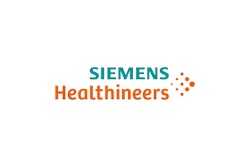Sunday, November 27 | 12:05 p.m.-12:15 p.m. | SSA03-09 | Room S502AB
4D flow is a volumetric cardiac MR technique that in 10 short minutes provides both anatomic and flow information over the cardiac cycle in a nonbreath-hold acquisition. Is it ready to replace standard MRI for left ventricular (LV) assessment?The free-breathing protocol certainly makes it faster, less stressful for the patient, and less personnel-intensive than standard MRI, with corresponding reductions in the need for sedation, according to researchers from the Netherlands.
In their study, investigators from Erasmus University Medical Center in Rotterdam sought to use anatomical information from the 4D flow sequence, assess global LV function, and compare the results with functional cardiac CT.
The study included 10 consecutive adult patients with bicuspid aortic valve disease who underwent MRI and CT on the same day. After imaging, the 4D flow raw datasets were uploaded to a cloud-based software application (Arterys) and syngo.via (Siemens Healthineers), and images were reconstructed in 20 cardiac temporal phases with a compressed sensing algorithm. Cardiac MR 4D flow was used to measure ejection fractions and end-diastolic, end-systolic, and stroke volumes. Similar measurements were taken from the CT data.
"The correlations for end-diastolic volume, stroke volume, and ejection fraction were very good; however, CT measured slightly higher," Dr. Raluca Chelu wrote in an email to AuntMinnie.com.
4D flow measurements versus standard MR were already validated by Hanneman et al earlier this year, she noted.
"The added value of our study is that we used for 4D flow a gadolinium-based contrast agent that is easily accessible," Chelu said. "Probably it will take some more time and energy until 4D flow becomes a widely available clinical tool, but proving that measurements for left ventricular function are reliable represents a step forward."


















